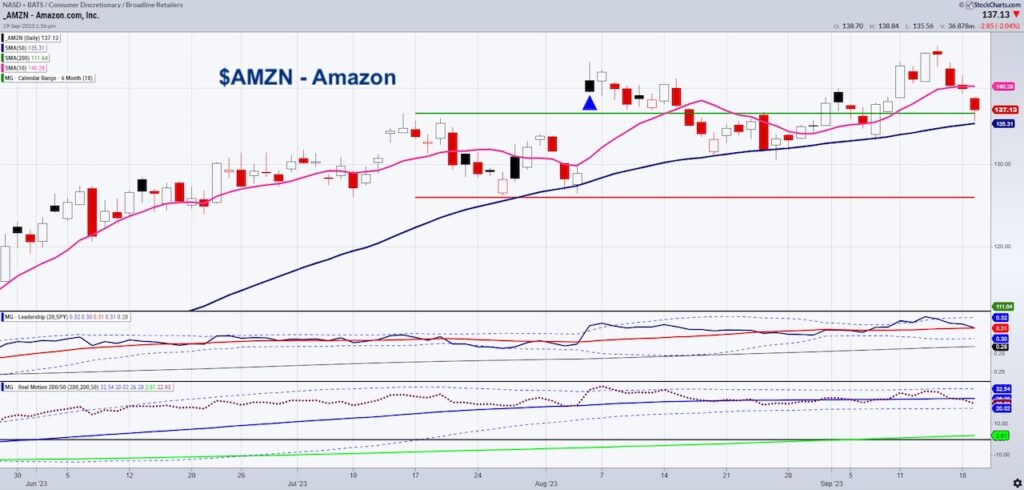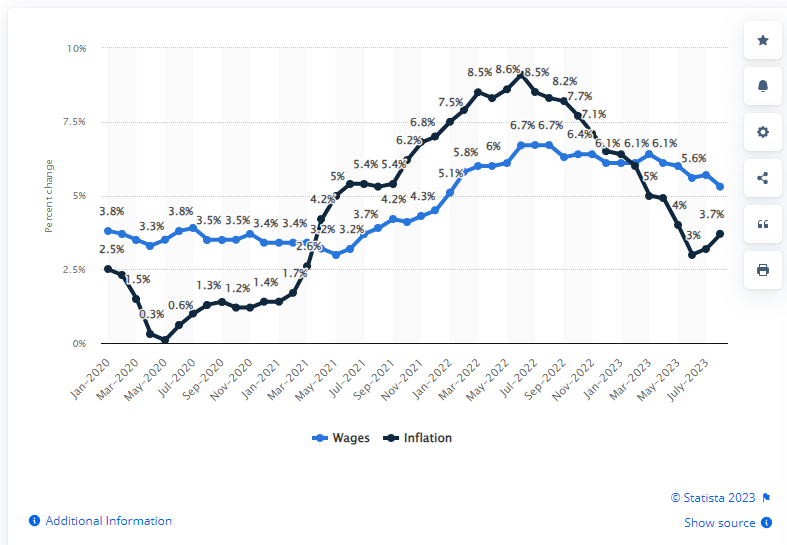
While the UAW strike continues, and the debate on how much it matters in the scheme of things rages on, other wage trends are emerging.
Amazon today announced it will hire about 250,000 logistics personnel for the holiday season at a wage of $20.50 per hour.
The Amazon (AMZN) stock chart shows a retracement to the July 6-month calendar range high and the 50-Day Moving Average (DMA).
However, there is a bearish divergence on our Real Motion momentum.
indicator. This could mean price is vulnerable to break under the key support levels or 135.30.
It could also mean that if prices improve from here, momentum might improve.
Nonetheless, this remains to be seen after today’s announcement that could hit the bottom line for Amazon, especially if the holiday season is not all that.
After 40 years of wages not keeping up with inflation or the cost of living, we started thinking:
Is the next wave of hyperinflation emerging from wages, and not necessarily just from high food and energy prices?
To explain:
Scenario 1. More and more workers demand higher pay, companies are forced to comply. These companies must reduce their production thereby tightening supply. Demand remains robust with the added wages and stronger labor market; hence the cost of goods goes up.

Scenario 2. Wages soften, as seen in the chart, since March 2023 and inflation does not come down much more (in fact it is rising). Workers do not get a higher income. Workers begin to leave their jobs, or quietly quit. Companies must reduce their production, thereby tightening supply. Demand continues to outstrip supply (although not as much as in scenario 1), with the lack of wage growth; hence the cost of goods goes up anyhow due to social unrest. Social unrest tends to create hoarding.
This is a theory of course. This theory though is based on the trend which started in the summer and is continuing into the fall – demand for higher pay!
Twitter: @marketminute
The author may have a position in mentioned securities at the time of publication. Any opinions expressed herein are solely those of the author and do not represent the views or opinions of any other person or entity.








